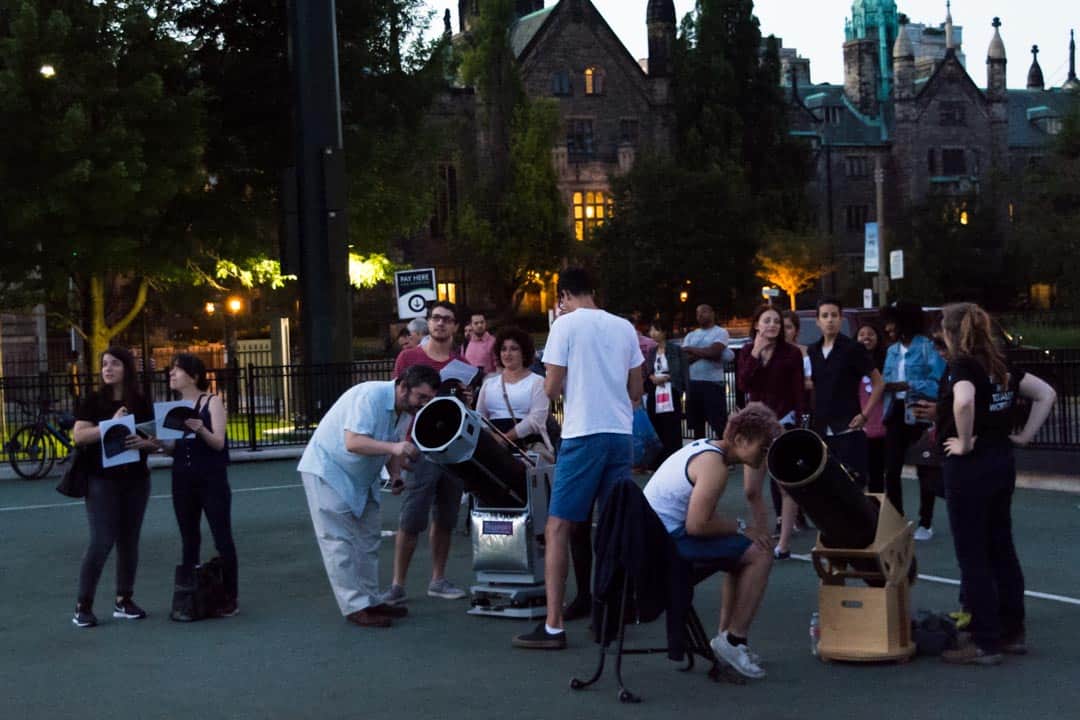U of T’s Dunlap Institute for Astronomy & Astrophysics hosted a “Canada 150 Star Party” on July 29. Around 500 stargazers came to the Back Campus Fields at UTSG to enjoy a night of unobstructed views of Jupiter, Saturn, the Moon, and satellites.
The Royal Astronomical Society of Canada (RASC) and the Fédération des astronomes amateurs du Québec sponsored similar events across the country, where the public was given a chance to take a closer look at the planets and the Moon, as well as ask astronomers and astrophysicists questions and inquire about their research.
“There’s lots of people all across Canada who are doing this at the same time, and that makes it pretty special,” said Jennifer West, a postdoctoral researcher at Dunlap and one of the organizers of the event.
“Jupiter and Saturn are the most interesting-looking through a telescope,” West continued, noting that the night was even more unique because both Saturn and Jupiter were visible. It is more common for only one of the two to be visible at a time.
The International Space Station, which orbits Earth every 90 minutes, was also spotted. “It’s just not always in a good spot for us to see,” West said. “But tonight we had a good pass where we could see it go across the sky.” Attendees also saw an iridium flare, which occurs when a communications satellite reflects sunlight toward Earth, making it very bright and easy to spot.
Eclipse glasses were distributed, along with star finders and pamphlets of information about the Star Party and the eclipse to come on August 21; U of T will be holding an eclipse party from 10:00 am to 5:00 pm at the CNE near the Princess Margaret Fountain. Canadians will only witness a partial eclipse. In Toronto, 70 per cent of the sun will be blocked.
“You probably won’t even notice it was happening because the sky still stays pretty bright,” West said. “But if you wear the proper sun protection then you can, and you’ll see that a bite is taken out of it.”
West explained that solar eclipses are fairly common, occurring about every 18 months, though they are often not widely visible. The path of totality — an approximately 100-kilometre track of the Moon’s umbral shadow across Earth — will go through parts of fourteen states in the US.
“The last total eclipse in North America was 1979, and the next one [will be] in 2024, but [then] there won’t be one until 2099,” West stated. “So if you want to see an eclipse happen twice in the same city, you have to wait about 400 years.” She encourages others to travel to the US to witness the phenomenon, though if interested parties aren’t up to crossing the border, there are several events taking place in Canadian cities.
The Department of Astronomy and Astrophysics holds monthly astronomy tours at McLennan Physical Laboratories. The RASC also organizes similar events throughout the year, and for its 150th anniversary in 2018, West said it plans to host another national star party.


